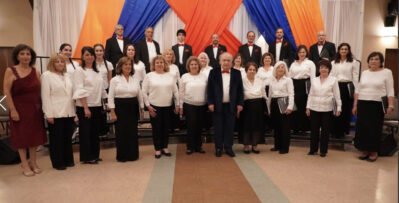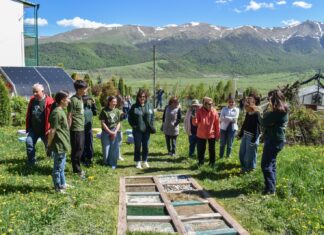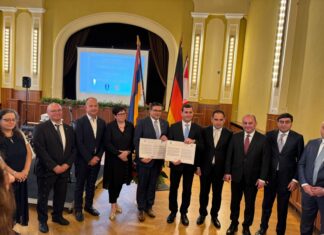YEREVAN — The right to self-determination, enunciated about 100 years ago by US President Woodrow Wilson in his famous 14 Points document, has traditionally been one of the most important principles for the peaceful resolution of the Nagorno-Karabakh (NK) conflict. In a document dated July 10, 2009 that is available on Barack Obama’s presidential website, the presidents of the United States, Russia’s Dmitriy Medvedev, and France’s Nicolas Sarkozy agreed that the self-determination of the people of NK was one of the basic principles of the resolution. The same principle of international law back in the 1960s and 1970s facilitated the independence movement in many African countries.
However, beyond the principle of self-determination, there is another regulation, somewhat overlooked in the West, that paved the way for Nagorno-Karabakh’s independence back in 1991. “This was well known in the 1990s but forgotten now,” observed Larisa Alaverdyan, the director of the Against the Violation of Law NGO and a former deputy of the Armenian Parliament, when I met her in Yerevan during my last trip to the homeland.

“The constitution of the Soviet Union included a provision that the Soviet republics could withdraw from the USSR. However, no mechanism for that withdrawal was defined by any rules. On April 3, 1990, that law was finally adopted,” related Alaverdyan, drawing attention to the legislation that laid the legal basis for NK’s withdrawal from still-existing Soviet Azerbaijan a year after its adoption.
This regulation articulated that the self-governing autonomous regions were granted the right to determine their own political status, in case the Soviet republic to which the Soviet Constitution attached them, chose to leave the Soviet Union.
The third article of the law in particular noted: “The people of autonomous republics and autonomous formations retain the right to decide independently the question of remaining within the USSR or the seceding Union republic, and also to raise the question of their state-legal status.”

The following year, in March of 1991, Soviet leader Mikhail Gorbachev initiated a referendum on whether the republics wanted to remain part of the Soviet Union. Those republics already preparing themselves for independence (Armenia, the three Baltic Republics, Georgia, and Moldova) were allowed to not participate in this referendum but take actions towards formalizing their independence according to the April 3, 1990 law. As a result, Armenia declared that a national referendum for independence would occur on September 21, 1991 — both the referendum and the dates fully complied with the aforementioned Soviet law from the previous year.









